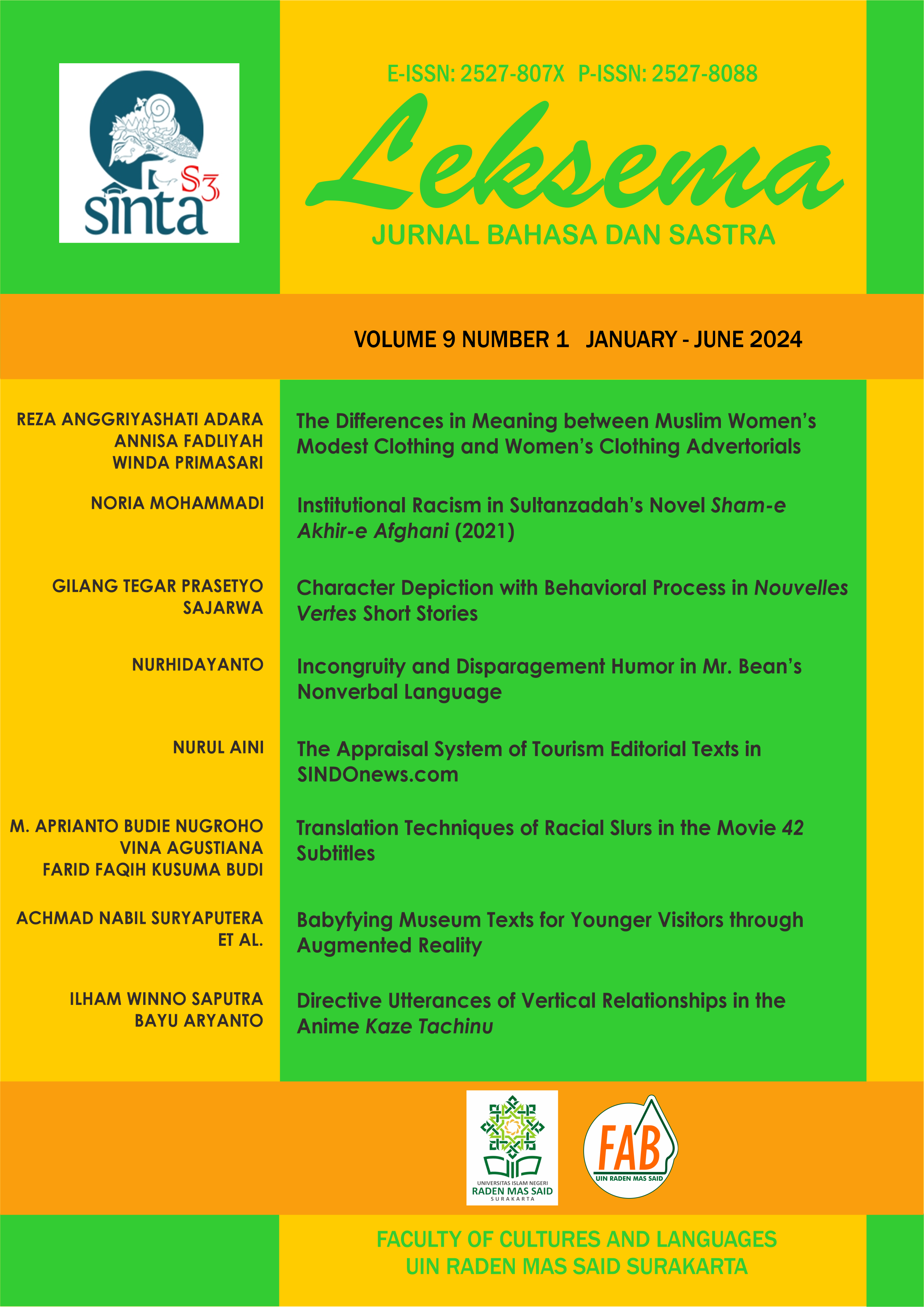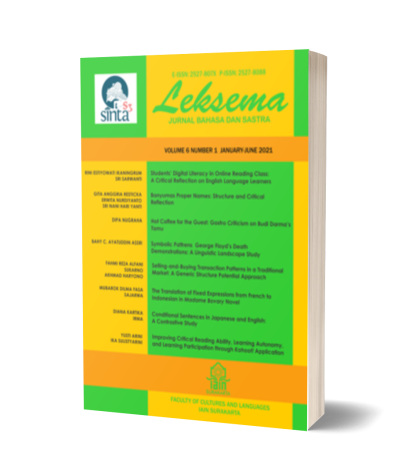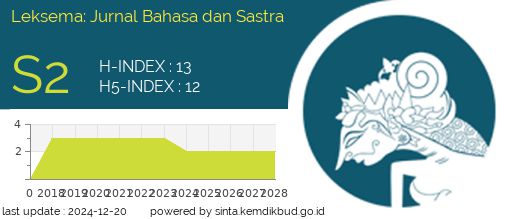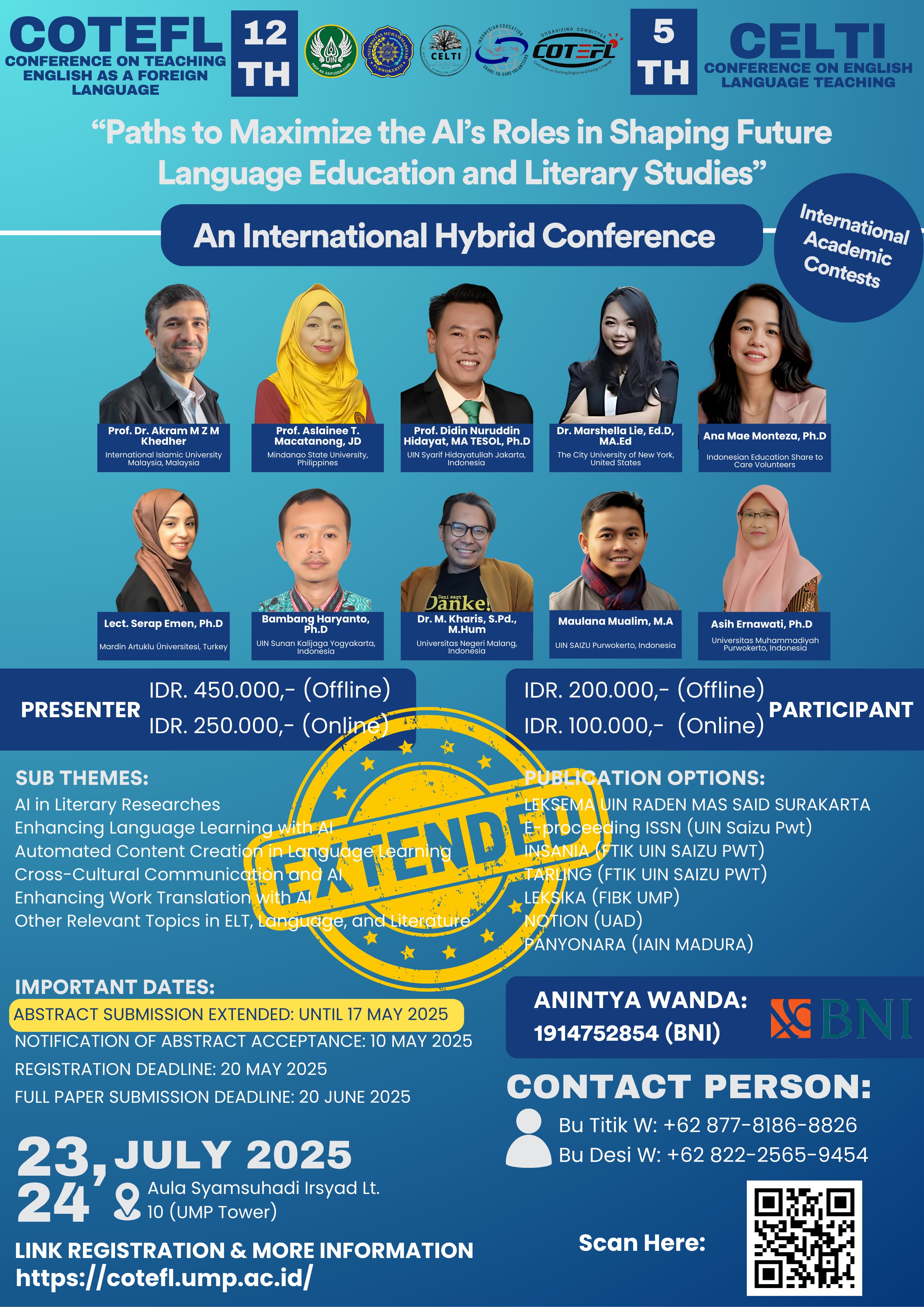BABYFYING MUSEUM TEXTS FOR YOUNGER VISITORS THROUGH AUGMENTED REALITY
DOI:
https://doi.org/10.22515/ljbs.v9i1.8698Keywords:
babyfication, exhibition text, museum, younger audienceAbstract
Museums have long been recognized as a place to study historical objects. However, at the same time, museums are considered unfamiliar to younger visitors due to the complexity of the descriptions of their artifacts. In order to overcome this problem, this research attempted to simplify the museum texts through an application named babyfication. The process of simplification involves three main components: conceptual simplification, modification for simplicity, and summarization of text. For enhancing the comprehension of the museum texts, augmented reality (AR) technology features are utilized in the process. Through a combination of simplified language, vibrant visuals, and interactive elements, this research tried to prove the beneficial outcomes from AR technology in bridging the gap between traditional museum texts and the developmental needs of young children, particularly dealing with their engagement with cultural artifacts. A qualitative research approach and Spradley’s data analysis technique were employed to figure out how the descriptive texts of museum artifacts are babyfied. Applying the theory of babyfication from Purnomo et al. (2021) as a ludic adaptation concept, it was revealed that textual, visual, and operative elements, that have been babyfied by using AR technology as a medium, tend to be textually simpler, more visually appealing, and make it easier for children to understand the information.
Downloads
References
Belder, Jan De and Moens Marie-Francine. 2010. “Text Simplification for Children”. Proceedings of the SIGIR Workshop on Accessible Search Systems, 19-26.
Caillois, Roger. 2001. Man, Play, and Games. University of Illinois Press.
Dean, David and Gary Edson. 1996. Handbook for Museums. Routledge.
Durgin, Frank H. 2000. “The Reverse Stroop Effect”. Psychonomic Bulletin & Review 7 (1): 121-125.
Feuerstein, Anna and Carmen Nolte-Odhiambo. 2017. Childhood and Pethood in Literature and Culture: New Perspectives in Childhood Studies and Animal Studies. Routledge.
Foucault, Michel. 1983. This Is Not a Pipe Vol. 24. University of California Press.
Gaver, William W, Andrew Boucher, Sarah Pennington, and Brendan Walker. 2004. “Cultural Probes and the Value of Uncertainty.” Interactions 11 (5): 53-56.
Han, Lushan, Abhay L Kashyap, Tim Finin, James Mayfield, and Jonathan Weese. 2013. “UMBC_EBIQUITY-CORE: Semantic Textual Similarity Systems”. In Second Joint Conference on Lexical and Computational Semantics (* SEM) Volume 1: Proceedings of of the Main Conference and the Shared Task: Semantic Textual Similarity: 44-52.
Hassenzahl, M. 2010. Experience Design: Technology for All the Right Reasons. Morgan & Claypool Publishers.
Hiebert, James and LeFevre. 1986. Conceptual and Procedural Knowledge: The Case of Mathematics. Routledge.
Jeanine, Greco, Alice Martin, Signe Nelson, Tera Williams, Robert Drake, Sean van Dommelen, and Debbie Kudlo. 2009. Una Voce. Tacoma Community College.
Jurafsky, Daniel. 1996. “Universal Tendencies in the Semantics of the Diminutive”. Language, 72 (3): 533-578. DOI: 10.2307/416278.
Keller, Tanja and Matthias Grimm. 2005. “The Impact of Dimensionality and Color Coding of Information Visualizations on Knowledge Acquisition”. Knowledge and Information Visualization: Searching for Synergies 167-182. DOI:10.1007/11510154_9.
Khan, Mudassar Ali, Sabahat Israr, Abeer S Almogren, Ikram Ud Din, Ahmad Almogren, and Joel JPC Rodrigues. 2020. “Using Augmented Reality and Deep Learning to Enhance Taxila Museum Experience”. Journal of Real-Time Image Processing 18: 321-332. DOI: 10.1007/s11554-020-01038-y.
Kiefer, Barbara Z. 1995. The Potential of Picturebooks: From Visual Literacy to Aesthetic Understanding. Prentice Hall.
Ma, Jung Yeon and Jong-Soo Choi. 2007. “The Virtuality and Reality of Augmented Reality”. Journal of Multimedia 2 (1): 32-37. DOI:10.4304/jmm.2.1.32-37.
MacLulich, Carolyn. 1992. Text Production Project: An Outline of a New Project for 1993. Australian Museum.
Marenus, Barbara. 2005. Programs and Plans of the National Center for Education Statistics: 2005 Edition. NCES – U.S. Department of Education: Institute of Education Sciences.
Martínez, Héctor, Danai Skournetou, Jenni Hyppölä, Seppo Laukkanen, and Antti Heikkilä. 2014. “Drivers and Bottlenecks in the Adoption of Augmented Reality Applications”. Journal of Multimedia Theory and Application 2 (1): 27-44. DOI: 10.11159/jmta.2014.004.
Nikolajeva, Maria. 2014. “Memory of the Present: Empathy and Identity in Young Adult Fiction”. Narrative Works: Issues, Investigations & Interventions 4 (2): 86-107. DOI:10.7202/1062101ar.
Nurhadi et al. 2003. Pembelajaran Kontekstual dan Penerapannya dalam KBK. Universitas Negeri Malang.
Purnomo, Luthfie Arguby, Lilik Untari, Lukfianka Sanjaya Purnama, Nur Asiyah, Robith Khoiril Umam, Yustin Sartika, Novianni Anggraini, and Elen Inderasari. 2021. “Ludic Adaptation: Can We Babyfy, Chibify, Bambify, or Cherubify a Literary Text for Younger Audiences?” GEMA Online Journal of Language Studies 21 (1): 89-109. DOI:10.17576/gema-2021-2101-06.
Purnomo, SF Luthfie Arguby, Mangatur Nababan, Riyadi Santosa, and Diah Kristina. 2017. “Ludic Linguistics: A Revisited Taxonomy of Fictional Constructed Language Design Approach for Video Games”. GEMA Online Journal of Language Studies 17 (4): 45-60. DOI:10.17576/gema-2017-1704-04.
Rahmawati, Yuli, Hanhan Dianhar, and Fadhillah Arifin. 2021. “Analysing Students’ Spatial Abilities in Chemistry Learning Using 3D Virtual Representation”. Education Sciences 11 (4): 1-22. DOI: 10.3390/educsci11040185.
RAND Reading Study Group and Catherine Snow. 2002. “A Research Agenda for Improving Reading Comprehension”. In Reading for Understanding: Toward R&D Program in Reading Comprehension. RAND Corporation.
Ravelli, Louise. 2007. Museum Texts: Comunication Frameworks. Routledge.
Siddharthan, Advaith. 2014. “A Survey of Research on Text Simplification”. ITL-International Journal of Applied Linguistics 165 (2): 259-298. DOI:10.1075/itl.165.2.06sid.
Silvén, Eva and Björklunda Anders. 2006. Svåra Saker. Ting Och Berättelser Som Upprör Och Berör. Nordiska Museet.
Spradley, James P. 2016. The Ethnographic Interview. Waveland Press.
Vetter, Ronald, Charles Ward, and Susan Shapiro. 1995. “Using Color and Text in Multimedia Projections”. IEEE MultiMedia 2 (4): 46-54. DOI: 10.1109/93.482295.
Downloads
Published
Issue
Section
License
Copyright (c) 2024 Leksema: Jurnal Bahasa dan Sastra

This work is licensed under a Creative Commons Attribution-NonCommercial-ShareAlike 4.0 International License.
The copyright of the received article shall be assigned to the publisher of the journal. The intended copyright includes the right to publish the article in various forms (including reprints). The journal maintains the publishing rights to published articles.
In line with the license, the authors and users (readers or other researchers) are allowed to share and adapt the material only for non-commercial purposes. In addition, the material must be given appropriate credit, provided with a link to the license, and indicated if changes were made. If authors remix, transform or build upon the material, authors must distribute their contributions under the same license as the original.







